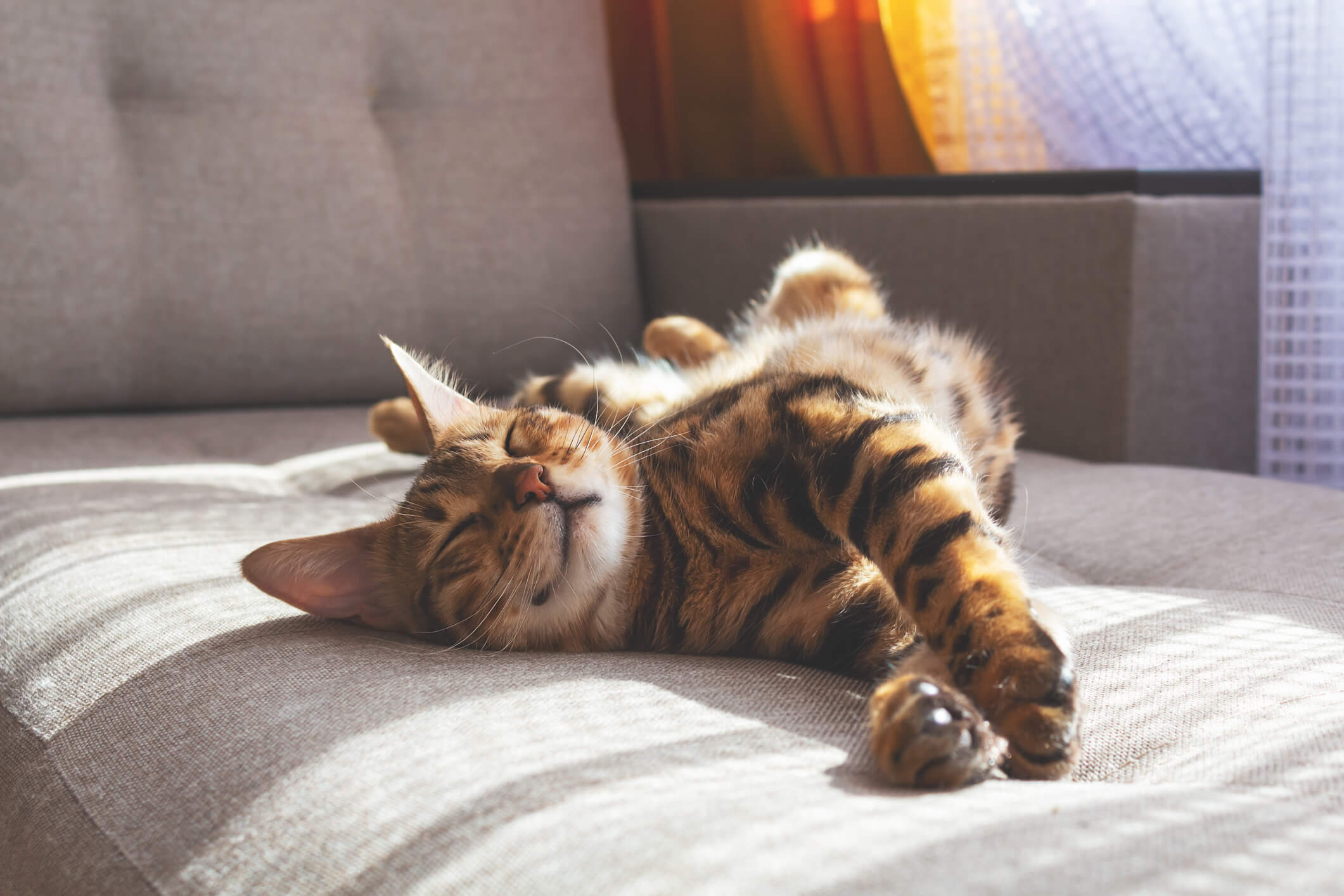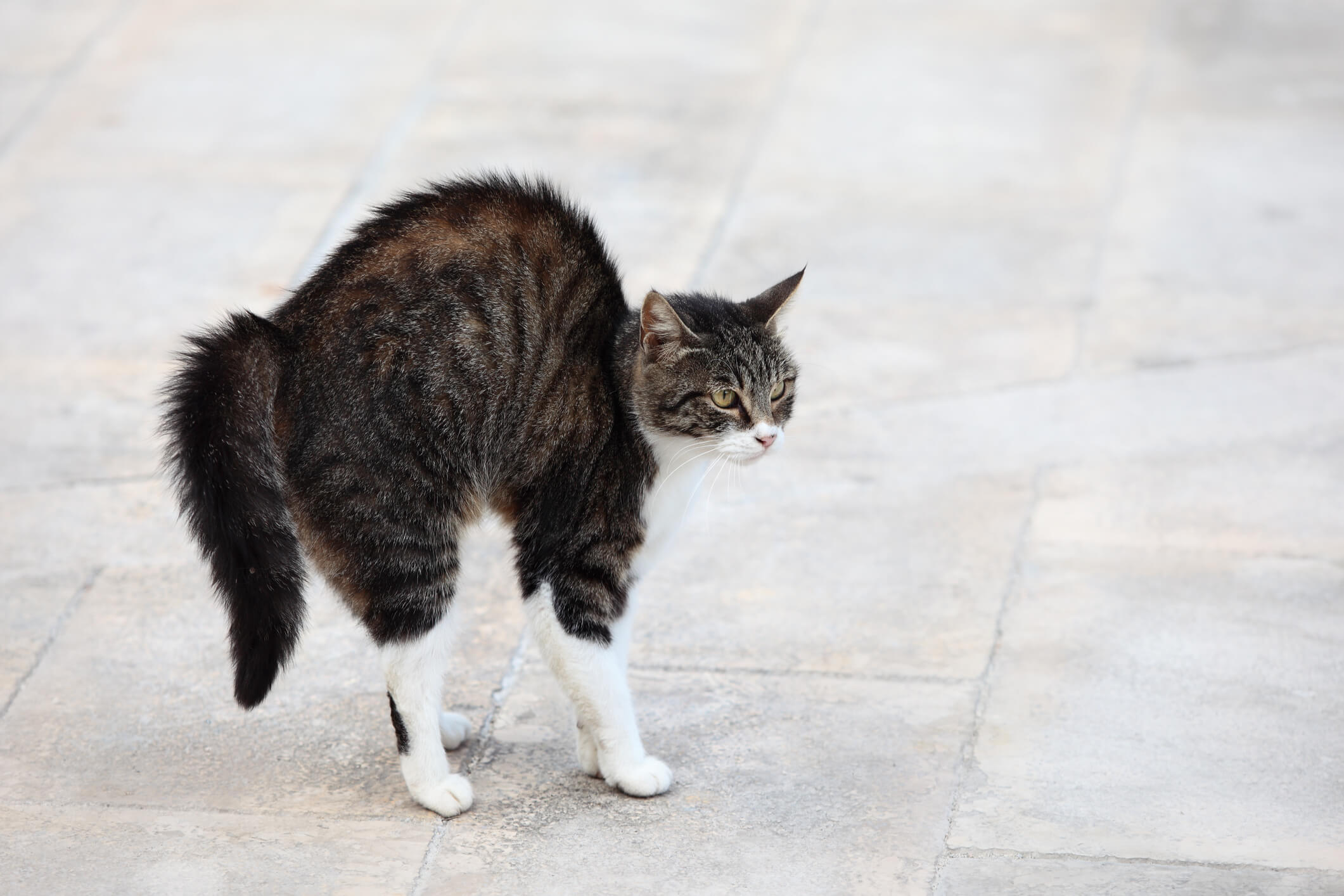
How Can You Tell if Your Cat Is Happy?
No matter how long you’ve been a cat parent, deciphering your feline friend’s emotions can sometimes feel like trying to solve a complex puzzle. Our four-legged companions have a unique language of their own. Thankfully, with a little insight, you can learn to read the signs that indicate when your cat is happy, content and thriving. From subtle body language to joyful behaviors, discover the fascinating world of feline happiness.
Reading the signs of a happy cat
How can you tell if your furry friend is comfortable and happy? Here are the telltale signs you’re raising a joyful cat.
- Relaxed body language: A relaxed and happy cat will have soft, smooth fur and a body that is neither tense nor stiff. They might sprawl out comfortably on their side or back, showing that they feel secure and at ease in their environment.
- Purring: Ah, the soothing sound of a purring cat. While it’s true that cats purr for various reasons, it’s usually a sign of contentment. If your cat purrs while cuddling with you or when you’re petting them, it’s a clear sign they’re feeling happy.
- Playfulness: Playfulness is a strong indicator of a happy cat. Engaging in playful behaviors like chasing toys, pouncing and even “hunting” objects (or you!) around the house suggests that your feline friend is enjoying life and feeling mentally stimulated.
- Slow blinking: Cats often express trust and affection through slow blinking. If your cat blinks at you in a slow, deliberate way, they’re essentially sending you a feline kiss. Acknowledge it with a slow blink in return!
- Tail position: The position of your cat’s tail can reveal a lot about their mood. A tail held high with a slight curve at the tip (like a question mark) indicates confidence and happiness. A “neutral” posture, with the tail held gently behind them and curved slightly, shows that your cat is content.
- Kneading: Kneading—when a cat rhythmically pushes and pulls their paws against a soft surface—is a behavior inherited from kittenhood. It’s a sign of comfort and contentment, often reminding them of nursing from their mother.
- Relaxed ears and eyes: Happy cats have relaxed ears that are facing forward or slightly to the side. Their eyes will be half-closed, indicating relaxation and trust.

Signs of feline stress, anxiety or discomfort
While understanding the signs of a happy cat is crucial, it’s equally important to recognize the symptoms of stress and anxiety in your furry companion. Cats are masters of masking illness and stress, but subtle changes in their behavior and body language can help clue you in.
- “Airplane” ears: When your cat is scared or distressed, their ears might flatten toward the back of their head or to the side. This is often called “airplane” ears because they resemble the wings of a plane.
- Puffy or thrashing tail: Your cat’s tail will also indicate aggression, fear and distress. Watch the way it moves—if it’s thrashing back and forth, something might be agitating your furry friend. Cats may also puff up their tails or tuck them when frightened and hold their tail stiff and straight when aggressive.
- Aggressive behavior: Uncharacteristic aggression toward you, other pets or even themselves can signal that your cat is experiencing emotional distress. Your cat might growl and hiss, swat or bite to show aggression.
- Changes in appetite: A sudden decrease or increase in your cat’s appetite can indicate stress or health issues. Any changes in eating habits should be monitored and addressed right away.
- Excessive grooming: Cats may groom themselves more than usual when stressed. Excessive grooming can lead to hair loss, skin irritation and even digestive problems.
- Hiding: If your normally social cat suddenly becomes reclusive and spends more time hiding, it’s a sign they might be feeling sick or anxious.
- Changes in litter box behavior: Any changes in litter box habits, such as avoiding the litter box or urinating outside of it, can be indicative of underlying stress or health issues.

If you notice signs of anxiety, stress or aggression in your cat, don’t ignore them. Cats get stressed for a variety of reasons—some random and fleeting, and others serious and long-term.
Determine whether you cat’s anxiety is sudden or normal for them. Some cats take time to adjust to new environments and won’t display happy behaviors right away after adoption. Others have chronic anxiety that will require persistent treatment. You might be able to help calm them with environmental enrichment and herbal supplements. Ingredients like chamomile, valerian root and L-tryptophan are known for their calming effects on cats.
However, if your cat is usually happy and relaxed, sudden anxiety might indicate something more serious, like a health problem. Address any household or lifestyle things that might be stressing your cat out, like loud noises or other aggressive pets. Consult with your vet if the anxiety continues to check on their health and build a stress management plan.
Clue in to your cat’s mood
While it’s gratifying to know that your cat is content and happy, it’s equally important to remain attuned to all their emotional needs. By understanding your cat’s body language and behaviors and taking proactive steps to address anxiety and stress, you’ll help them live as happy a life as possible!


